I’d gotten a new car and I wanted to explore some of its limits, as well as my own. I also wanted to do so in ways that are frowned upon when driving city streets.
The result was a day at the ProFormance Racing School. No, it wasn’t about racing, per se. It was more about putting myself and my car into situations in a safe environment so I could more safely handle similar situations out in the “real world”.
The class
Not long after taking delivery of my new car – a Tesla P100D – it became apparent that it was well beyond anything I’d driven in the past. Not only in terms of the technology (my primary reason for getting it), but in terms of performance (the “P” in P100D) and capability on the road.
For many years I’d had the idea that taking a “refresher course” in driving skills would be a useful thing to do. I now had a more specific and timely reason to pursue the idea.
A former Microsoft co-worker had for a time been an instructor at ProFormance, (and also a Tesla owner) and on his recommendation I signed up for the One Day High Performance Driving School.
At a high level the course breaks down into two basic areas: what I’ll refer to as “cone work” – dealing with an assortment of scenarios by driving into and around courses laid out using traffic cones – and “road work” – literally getting out on the Pacific Raceways 2.25 mile course, (which long time locals might also remember as SIR, or Seattle International Raceway), and with an instructor in the car learning to navigate the course … at speed.
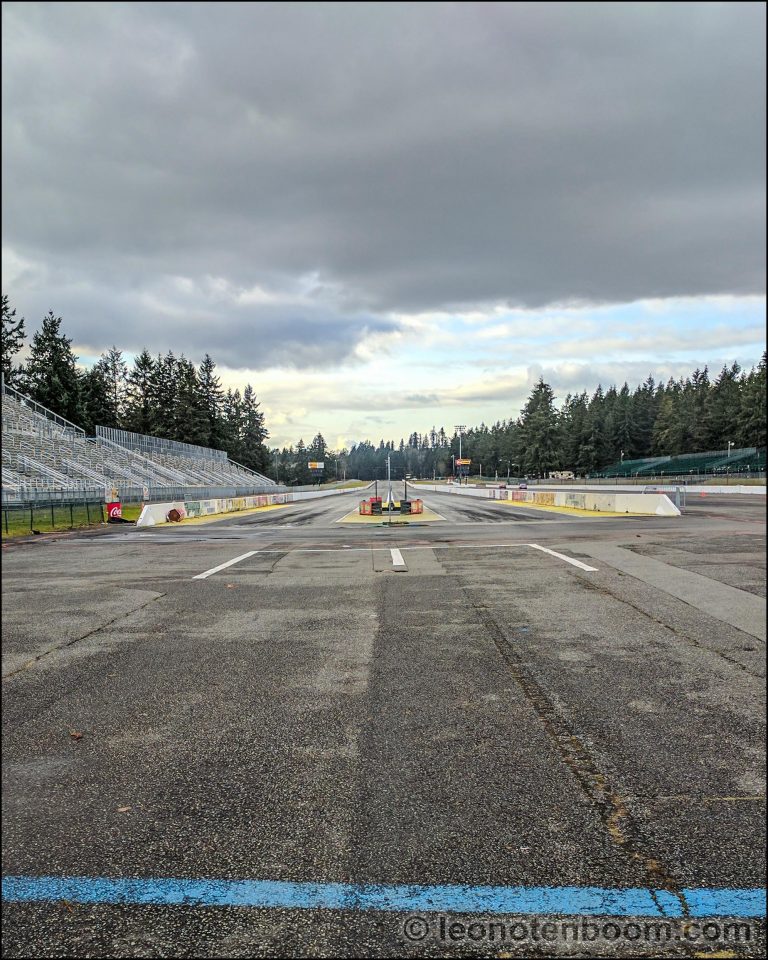
The morning
Our group of about 16 students broke into two groups, and at opposite ends of the raceway we each performed a total of two exercises, four times, and then swapped.
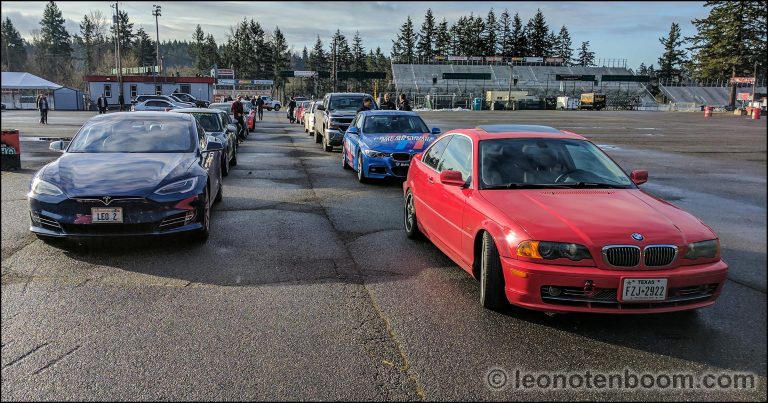
My first exercise was what I’d call the “last minute decision”. It’s a simulation of driving down a road, coming across an unexpected obstacle, and having to swerve either right (simulating driving onto the shoulder), or left and then back (simulating driving into the oncoming traffic lane, maneuvering around the obstacle, and then returning to your lane). The “decision” was made for you by an instructor who would, at the “last minute” indicate which direction you should choose – by stepping into the other and flagging appropriately.
The Tesla corners wonderfully, something I’d already experienced, so this was an exercise that challenged me to simply pay attention and react appropriately. I’m happy to report that no cones (or instructors) were damaged.
In the second exercise the cones didn’t fare as well. This was an exercise designed to demonstrate the characteristics of cornering while braking, again at speed. For those unfamiliar with ABS, it was also an opportunity to begin to understand what that feels like. The target was a fish-hook patterned lane into which we were supposed to drive and then come to a sudden stop as we navigated the hook.
This was an excellent exercise to begin to get a feel for the car’s traction and sudden braking. It took approaching the corner at ever increasing speeds before I got the car’s ABS to kick in at all, and indeed, cornering performance suffered – and cones were inconvenienced – when that happened.
At the other end of the course we alternated between two exercises.
The first was a classic panic stop, at higher speed than earlier, but without the cornering aspect. Rather than starting at, say, 25mph, we’d approach a coned gate at more like 50, and come to a stop as quickly as possible. While it doesn’t sound like much, I believe it’s important to experience this in a vehicle so that if it ever happens “for real”, drivers aren’t surprised by the performance of their car and ABS.
Of course it was simple, and easily handled until the 3rd run, where they added a “child” – in the form of another cone – in the middle of the road. And exceptionally close to the “brake here” line. This time the goal was once again, stop as quickly as possible, and by the way, don’t kill the child.
The Tesla’s handling through an exercise like this was wonderful, and I’m happy to report that there were no cone-casualties.
The other exercise was what dog agility people would refer to as weave poles. First at 25mph, and at increasing speeds in subsequent runs, navigating at constant speed a series of cones places in a straight line. All the while also paying attention to an instructor at the far end of the course who would occasionally signal to skip a cone.
The goal of this exercise was, once again, to get a feel for how the car handles in these situations (wonderfully, as I expected), as well a emphasizing what the instructors referred to as “looking high” – looking well beyond the next cone, obstacle, or maneuver and paying attention to what’s happening further down the road. I think I only missed one flag, on my final run, that may have been closing in on 40mph through the course.
Those four exercises may not sound like a lot, but honestly I really found them valuable, for two reasons:
- Gaining a much better feel for how the car handles in situations that one might actually encounter while street driving.
- Gaining a much better feel, and practice, for how the driver handles those same situations. 🙂
After a break for lunch (and a charge for the Tesla; more on that later), it was time to hit the track.
The afternoon
Once again in two groups, we each took to the track, in three separate outings. Always with an instructor (Hi, Mirko!), and always wearing a helmet.
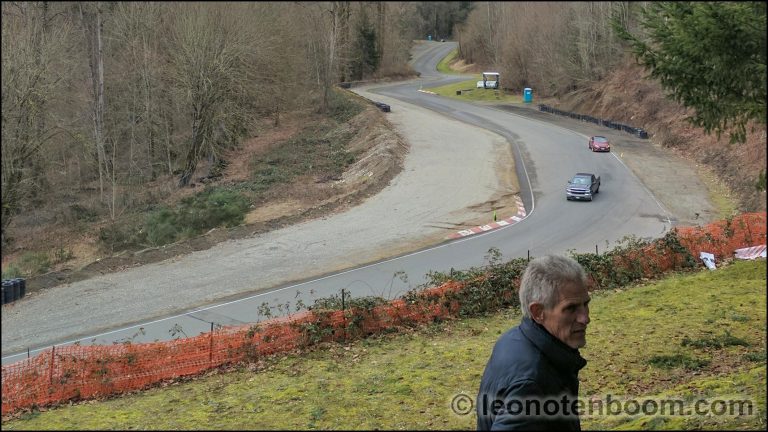
The first began with the instructor driving the car around the course twice at moderate speed, commenting on various aspects of the course, things to look for and actions to take. We then swapped places and again, drove the course slowly, and again with the the running instructive commentary.
After a break it was on to the course again, this time at speed, and with company. With the exception of the first instructive run, the rest of the afternoon included other more experienced drivers on the track that were there on their own. Naturally we practiced being overtaken frequently. While some of my classmates were obviously more skilled, or more comfortable, going at full racing speed quickly, I, and others, focussed again on our vehicles and our skills at the expense of speed. After perhaps a half a dozen laps it was time for another break.
The final session was, as you might expect, the fastest, and it’s where I noticed the speedometer hitting 112mph at one point (later confirmed by data – see below). My focus, and indeed my goal, had never been about speed, but rather the car’s feel and my own skills. I was still getting overtaken regularly, and that was just fine.
And, yes, it was a lot of fun.
The car
My big take-away about the car is how capable it is. In fact, I remarked to my instructor that it’s more capable than I am, in many ways. (While they repeatedly referred to our cars as “hunks of metal with rubber hanging off” – no doubt to emphasize the importance of the driver – it kinda feels like the Tesla might be a little more than that. )
Aside from skidding through some cones in the fishhook exercise I never felt like I pushed the car to or beyond its limits. Given the things that we did, I’m actually even more pleased with it in that regard. It took everything I threw at it without issue. Besides its stability, the one thing that I really enjoyed was, after getting overtaken, showing off its acceleration to quickly catch up to the cars that had just passed by. That whole zero-to-sixty thing is nice, but impractical. 30-to-80, on the other hand, comes from the same place, and has more real-world use.
The tech
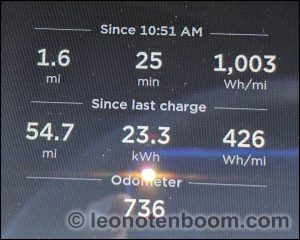
While this adventure wasn’t really about the technology of the car, it was still something that warranted some attention from time to time. Everything from instructing the instructor on how to turn the car “on”, to showing off the Ludicrous mode “plus” Easter Egg, managed to find their way into the conversation.
I probably didn’t have to charge while at the track, but I did anyway. I set the car to charge to 100% the night before which gave a rated range of 314 miles. As I told a few folks, there are “best practices” to driving in such as way as to maximize your range, but our day at the track was almost the exact opposite. Since there was a Tesla charger there (I believe the 90amp version), there was no reason not to take a charge during lengthier breaks. It made the drive home more relaxing at the end of the day, and I got home with over 100 miles of rated range left.
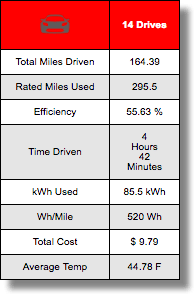 I paid little attention to the car’s controls throughout the day. I left it configured as I drive it, on purpose, since I was most interested in its “normal” characteristics. I did note the auto-lowering suspension kicked in whenever I went over 85mph. Not sure that’ll happen in real life unless I take it on a lengthy road trip to a state with more progressive speed limits.
I paid little attention to the car’s controls throughout the day. I left it configured as I drive it, on purpose, since I was most interested in its “normal” characteristics. I did note the auto-lowering suspension kicked in whenever I went over 85mph. Not sure that’ll happen in real life unless I take it on a lengthy road trip to a state with more progressive speed limits.
Throughout the day data was being collected, and after I got home I had to check out the results. The detailed data confirmed a top recorded speed of 112mph, and also a very frenetic series of drives around Pacific Raceway. The charging information indicated that I’d added ~100 “rated” miles while there, so getting home without that additional charge might have been dicey.
The driver
My biggest take-away personally is confidence. Specifically confidence in the car’s capabilities, and in my own comfort with that understanding. The ability to perform and practice actions that you don’t need until you really need them is incredibly valuable.
While not really unexpected, I also learned I’m no racecar driver. 😉 It was a lot of fun, I felt capable at the limits to which I pushed myself, I’m glad I did it, but I don’t, now, feel a screaming need to take a car to the track on a regular basis.
My goal was getting a better feeling for the car, and myself, and I’m exceptionally pleased with the results.
The students
We were a class of 16, I think, and of course represented a wide variety of drivers.
The age range was a spread and it’s possible I was the oldest. I didn’t feel that way, of course, but looking around I’d have been hard pressed to point out someone at my age or older. I suspect at least a couple of the instructors were, however.
One of the students was a young girl of fifteen and a half. Not yet old enough for her license, but old enough for a learning permit in Washington State. Her parents brought her, and with an obviously European accent (I suspect Germany), they indicated that they were shocked that six hours of “driver’s ed” was all the training most teenagers got. Back home there was significantly more rigor to the process. I have a tremendous amount of respect both for the parents, taking this proactive step, and to the young girl who did fantastic, both in “cone work” and on the track.
The big take-away: do this!
It all brings up a very relevant point: we take driving for granted in the United States. For various reasons – often the distances involved – we build lives around our ability to drive an automobile. It’s something we treat as if it’s a right, rather than the privilege it really is.
And our European friends are right to be shocked. For the amount we depend on it, for the impact it has on our lives, we treat the skill with casual disregard.
My suggestion? Do this. Go find an advanced driving course (ProFormance has several, but there are others with varying types of focus), and take it. Treat your driving like the skill it should be.
When you get a new car – particularly if it’s significantly different than what you’re used to – take that class, again if you need to, or take a different one. Make an excuse to take your new vehicle into a “classroom” situation where you can safely explore exactly how it – and you – behave in situations you hope you’ll never encounter later, but all too often will.
Even if you already think you’re a fantastically capable driver, you’ll benefit. You’ll be safer; much safer.
And, you’ll have a lot of fun doing it.
I know I did. 🙂
Photos
There was a photographer at the event taking pictures as we did our thing. (SeeitImagery) The full set (with watermarks) is here. Not quite as many of myself as I’d hoped for (or, rather, not the shots I was hoping for). But shows the variety of vehicles we had. Cars with yellow numbers on their windshield were the more experienced drivers we shared the course with in the afternoon.

I raced at SIR more than a few years ago. Nice track. A little rough in spots
Come to Austin. 130 has the only highway with 85 mph speed limit. And if you have the right car and are driving safely the DPS ignores anything in double digits. And CotA is right there. “One of the best tracks in the world” according to Vettel
And the Tesla? Nice, very nice. Congratulations.
I agree, everyone should do this. Amazing what a car can do when driven properly.